
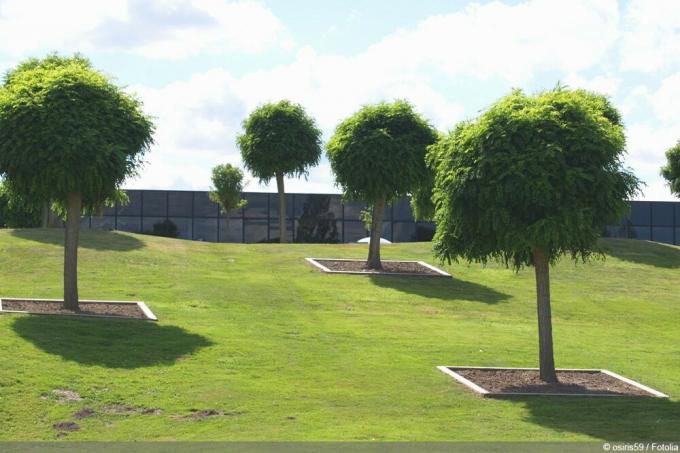
Table of contents
- Plant ball trees
- Watch out for root competition
- watering and fertilizing
- Cut
- Thin out
- Cut into shape
- Cutting back damaged areas
- hibernate
- Diseases
- Varieties suitable as ball trees
There are two groups of spherical trees. The crowns of one group are formed into a sphere by a corresponding cut or brought into the desired shape. Those in the second group are varieties whose crowns naturally grow spherically and only rarely need to be cut, e.g. B. the spherical plane tree. Regular pruning measures are the main part of care.
Plant ball trees
Before planting, you should note that ball trees can only be relocated after a few years with great effort. Accordingly, attention should be paid to a location where the tree can stand permanently. The final height and width of the crown play a decisive role. As a result, spherical trees should always be planted at a sufficient distance from house walls and neighboring properties. Once the right place has been found, you can plant.
- Best planting time in autumn and spring
- Planting in summer is only recommended in exceptional cases
- First, dig a sufficiently large planting pit
- Twice as deep and wide as the pad
- Excavated soil with organic fertilizer such. B. Mix horn shavings
- Drive in a pole for stabilization in the direction of the prevailing wind
- The pole should not exceed the height of the trunk
- Put part of the soil mixture in the planting hole
- Use the ball tree next to the post
- Fill up with excavated earth, compact the earth
- Create a pouring rim around the trunk
- Connect trunk and post with coconut rope
- Finally water vigorously
Tip:
In the case of spherical trees, a distinction is made between deep and shallow roots. In the case of the latter, e.g. B. a spherical plane tree, there is a risk that some of its roots will drive out of the ground and damage pipes and lines running in the ground.
Watch out for root competition
The trunk area of spherical trees is actually ideal for underplanting. However, the root system also plays an important role here, because the shallow-rooted ones tolerate little competition from roots. Nevertheless, there are plants that are suitable for underplanting, for example perennials such as comfrey, elfin flower, creeping spindle, stone seed, fat man and shadow sedge as well as various grasses. In contrast, underplanting varieties with heart-shaped root growth such as B. Ginkgo, trumpet or sweet gum are much less problematic. Cranesbills, foam blossoms, carpet spikes, golden strawberries or the Caucasus forget-me-not are suitable for this.
watering and fertilizing
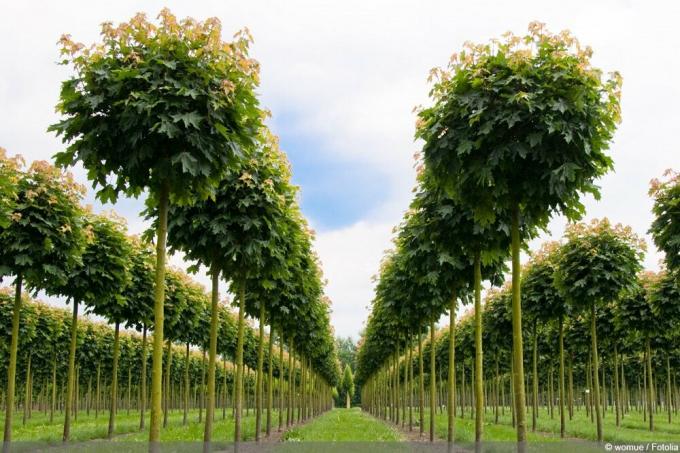
Good watering is usually only recommended at the time of planting, in the first few weeks afterwards, as well as in the case of prolonged heat and drought and permanent bucket keeping. However, the water requirement can vary from variety to variety. While some do well with dryness, others like it evenly moist, which is important to keep in mind. Applying a layer of mulch can be helpful for moisture-loving spherical trees. In order to cover the nutrient requirements, it is sufficient in most cases to give some compost in the spring.
Cut
Even if spherical trees are to be cared for in the same way as their larger relatives, they differ significantly when it comes to pruning. While some varieties such as B. the spherical ash can get by almost without any pruning measures, others have to be cut more frequently and regularly. This is mainly used to prevent balding. Balding occurs over time due to the dense growth of the crown. Regular pruning and trimming supports the vitality of the tree.
Thin out
The best time for thinning is late winter or late winter. early spring. There is no strong cut back. Only old and damaged branches and twigs are removed. You cut right at the base without leaving a stub on the tree. In order to maintain the symmetry of the spherical tree, some undamaged branches can also be cut out if necessary. When thinning out, as with any other cut, only sufficiently sharp cutting tools should be used. They ensure clean cuts and prevent frayed interfaces, which in turn can be an entry point for germs and pathogens.
Cut into shape
If the crown of a spherical tree becomes too large or too wide, it can be easily brought back into shape with the right cut. For some varieties such as B. the spherical ash or the spherical robinia can even be cut back into the old wood. The topiary should be done before new growth, preferably in late winter. The need for a shape cut should always be decided on a case-by-case basis.
- When topiary, shorten all main branches to short stubs of 15-20 cm
- Always cut near a sleeping eye
- Tree sprouts again from these eyes
- Another cut after three to four years
- Shorten branches that have been driven out at the old cutting points
- Cut back to the base
- With very dense crowns, reduce the number of branches
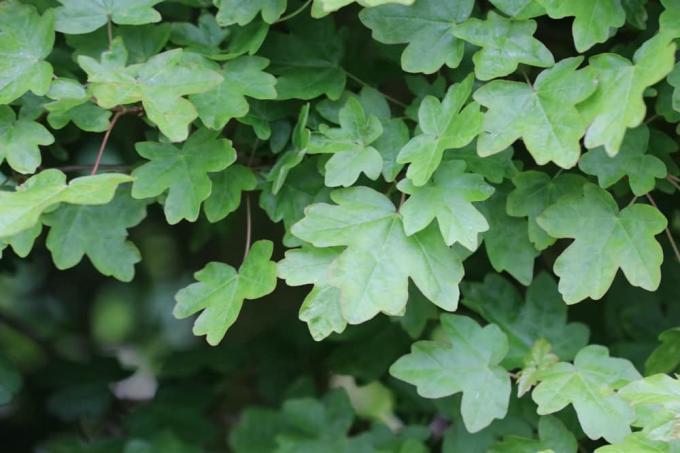
The ball maple is an exception when it comes to topiary. It should not be cut back too early. If you cut stronger or older branches in spring, the cuts would bleed profusely. The best time is therefore in August. It is better to refrain from pruning branches that are thicker than your thumb.
Tip:
If necessary, evergreen tall stems can be subjected to an additional topiary in summer.
Cutting back damaged areas
Ball trees can be damaged to a greater or lesser extent by storms, disease or pest infestation. Then more radical cutting measures are usually indispensable. A few, well-developed branches are left standing for this purpose. They are the basis for the formation of a new crown. All other branches above the graft site are removed. If this cut is made in late winter, the new shoots will appear a few weeks later. Individual damaged branches are cut off immediately at the base.
Tip:
If the trimming is not carried out immediately above the grafting area, a crown may not form. Then you should cut back the branches to the grafting point, without leaving branch stubs.
hibernate
As far as hibernation is concerned, there is a risk of frost cracks, especially in young spherical trees. This is caused by strong temperature fluctuations between day and night. Such temperature differences lead to tension in the bark tissue, the trunk can tear. In the worst case, this can result in the death of the tree in question. This can be counteracted by painting the trunk white, as is done with fruit trees. In addition, you can protect the ball tree by wrapping the trunk with reed or coconut mats, willow or jute.
Diseases
One of the most common diseases that can endanger a ball tree is a fungal attack. Fungi can attack branches and twigs as well as bark and foliage and manifest themselves in the form of discolouration. The cause can be damaged roots or unfavorable soil conditions. Before you reach for the scissors, you should observe the symptoms and only take countermeasures if there is a significant deterioration. In most cases, however, this can be dispensed with.
Varieties suitable as ball trees
maple – Acer platanoides 'Globosum'
The spherical maple is a tree up to 600 cm high and just as wide. Its characteristic spherical crown becomes flat and spherical with age and growth is weaker. The upright flower clusters appear before the leaves sprout. The initially light green leaves take on an intense golden yellow to reddish color in autumn. Acer platanoides 'Globosum' likes sunny to semi-shady and normal, well-drained garden soil.
sweetgum – Liquidambar styraciflua 'Gumball'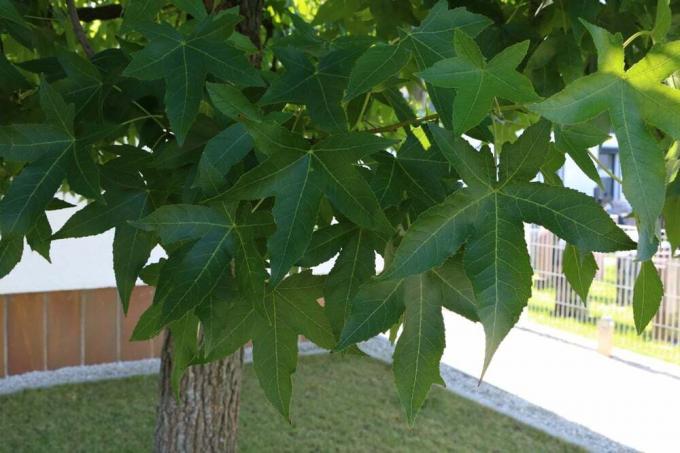
Also known as the dwarf sweetgum, the tree, which is up to 500 cm high, forms a densely branched, almost spherical crown without pruning, which can be up to 400 cm wide. In autumn it impresses with a magnificent coloring of the leaves. Flowering time is in May. The male flowers are green and racemose and the female capsules are spherical, prickly. The sweetgum tree likes to stand in sunny locations as well as in slightly acidic, fertile and fresh to moist soil.
spherical ash – Fraxinus excelsior 'Nana'
- Globe ash grows rather slowly
- Up to 600 cm in height and 300 cm in width
- Forms a compact, umbrella-like or irregularly oval crown
- Can be easily formed into a ball cut
- Likes to be in the sun, in deep, moist, moderately acidic to alkaline soil
- Fraxinus excelsior convinces with attractive autumn colors
Globe field maple – Acer campestre 'Nanum'
Acer campestre 'Nanum' is a spherical form of the native field maple. Its crown is spherical, densely leafy and usually wider than it is tall when it is old. It grows up to 700 cm in height and 400-700 cm in width. Green-yellow flower spikes appear in May and brown fruits in late summer. The spherical field maple feels at home in sunny to partially shaded locations and in any good garden soil.
Ball Ginkgo – Ginkgo biloba 'Mariken'
- Grows up to 150 cm tall and wide
- Very slow growing
- Forms a loosely to densely branched, almost spherical to flattened crown
- For a good spherical shape, occasional corrective cuts are required
- Leaves fan-shaped, leathery, fresh green and extremely decorative
- Ginkgo biloba 'Mariken' thrives in sunny to partially shaded locations
- Prefers moist, nutrient-rich, sandy and humic soil
ball cherry – Prunus fruticosa 'Globosa'
The spherical cherry, also known as steppe or dwarf cherry, grows very slowly, with a densely branched, spherical crown that is up to 400 cm high and wide. Prunus fruticosa 'Globosa' impresses with dark green leaves that turn yellow-orange in autumn, bright white flowers in April/May and rarely small sour cherries. The location should be sunny to semi-shady and the soil should be fresh, nutritious and rich in lime.
spherical plane tree – Platanus acerifolia 'Alphon's Globe'

The deciduous, hardy spherical plane tree is easy to care for and tolerates pruning, with naturally spherical and even growth. Their crown is up to 400 cm wide. The flower is rather inconspicuous. Platanus acerifolia prefers sunny to shaded locations as well as deep and well-drained soil. In autumn it forms spherical fruits.
spherical locust – Robinia pseudoacacia 'Umbraculifera'
- Also known as spherical acacia
- Develops a dense and highly branched spherical crown up to 500 cm wide and high
- Pinnate leaves are bluish green on top and light green underneath
- Robinia pseudoacacia 'Umbraculifera' is very tolerant of pruning and loves warmth
- Prefers sunny locations as well as loose and nutrient-rich soil
Tip:
Robinia pseudoacacia 'Umbraculifera' is poisonous in all parts of the plant.
spherical swamp oak – Quercus palustris 'Green Dwarf'

Quercus palustris is a spherical tree with a dense, evenly spherical crown and glossy green foliage that turns orange-reddish in autumn. It reaches a growth height of up to 400 cm and a crown diameter of up to 300 cm. It forms light yellow catkins in May and acorns in the fall. The spherical swamp oak loves sunny to semi-shady locations and moderately moist soil.
Ball Trumpet Tree – Catalpa bignonioides 'Nana'
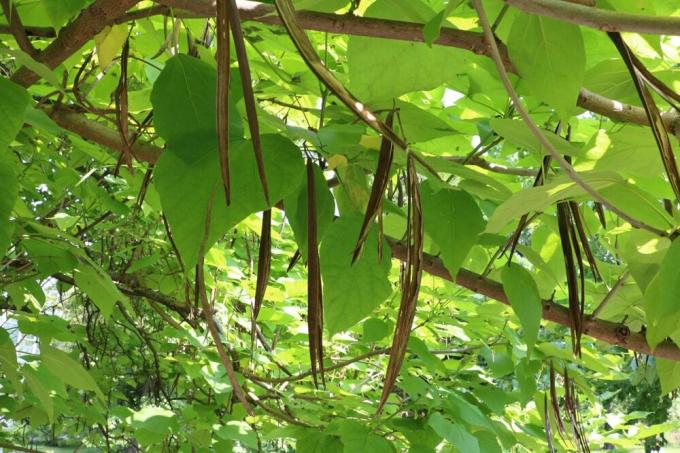
When young, the spherical tree, which is up to 500 cm high and wide, develops a compact, densely branched, spherical crown. As it ages, it flattens out. The initially green, heart-shaped leaves turn light yellow in autumn. The ball trumpet tree thrives in sunny to partially shaded, wind-protected locations and prefers fertile, moist loamy soil.
 garden editorial
garden editorial I write about everything that interests me in my garden.
Learn more about shrubs
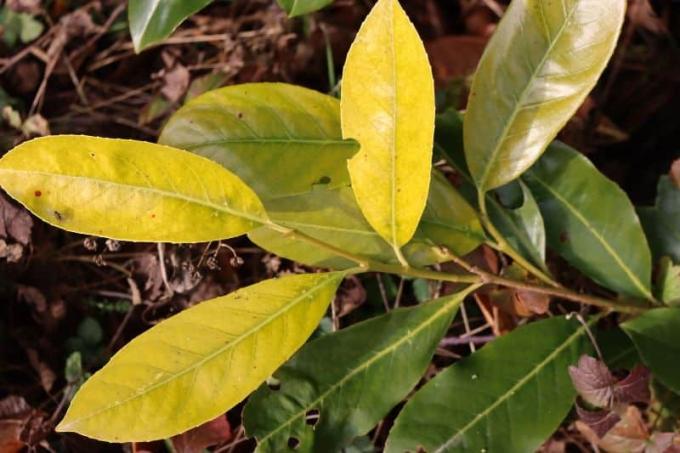
Cherry laurel has yellow / brown leaves: what to do?
Cherry laurel is one of the hardy garden plants in the garden. Nevertheless, it can happen that the leaves of the cherry laurel turn yellow or brown. The causes are manifold. Since some can kill the cherry laurel, you should investigate.

12 native evergreen shrubs & woody plants
Dreary, bare trees and bushes in winter? It doesn't have to be. Even in the European climatic conditions, native, evergreen trees thrive splendidly. The variety of species even enables the gardener to adapt his privacy hedge exactly to his garden design. This guide presents the most beautiful native and evergreen shrubs and woody plants.

Curb Vinegar | Does bucket or root barrier help?
Vinegar trees like to spread in the garden and sometimes even drive other plants away. However, this can be avoided by curbing the growth of the trees. You can find out which methods are best suited for this here!

Rhododendron has dried up: how to save it | Rododendron
Even if the rhododendron is withered and no longer sprout, it does not have to be dead. The plant can look completely dried up above ground, but there is often still life in the roots. It is therefore worth taking appropriate measures to save the flowering shrub.

Winter jasmine, Jasminum nudiflorum | Care, propagation & pruning
The winter jasmine is a relatively frugal and robust plant that can cope with many different site conditions. The plant enchants with bright yellow flowers in winter and tolerates deep sub-zero temperatures very well. It should be pruned regularly and is easy to propagate.
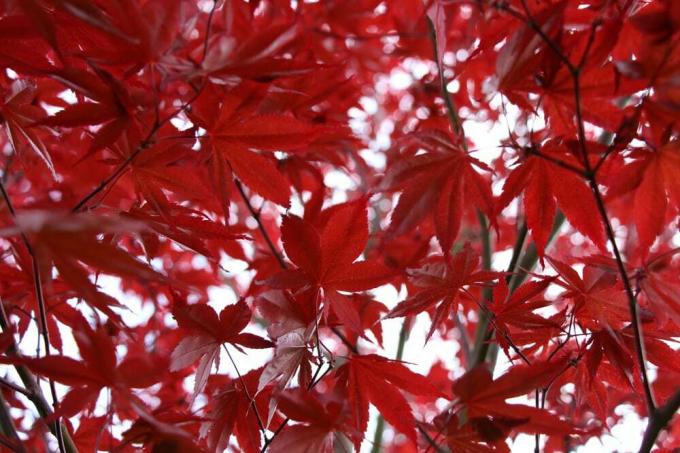
Red Norway Maple: Basic Care | Red-leaved maple
Red maple is well on the way to overtaking its green-leaved counterpart as a popular house tree. This guide will acquaint you with the basics of care so that the red-leaved premium variety can make the most of a representative welcoming committee in the garden.
